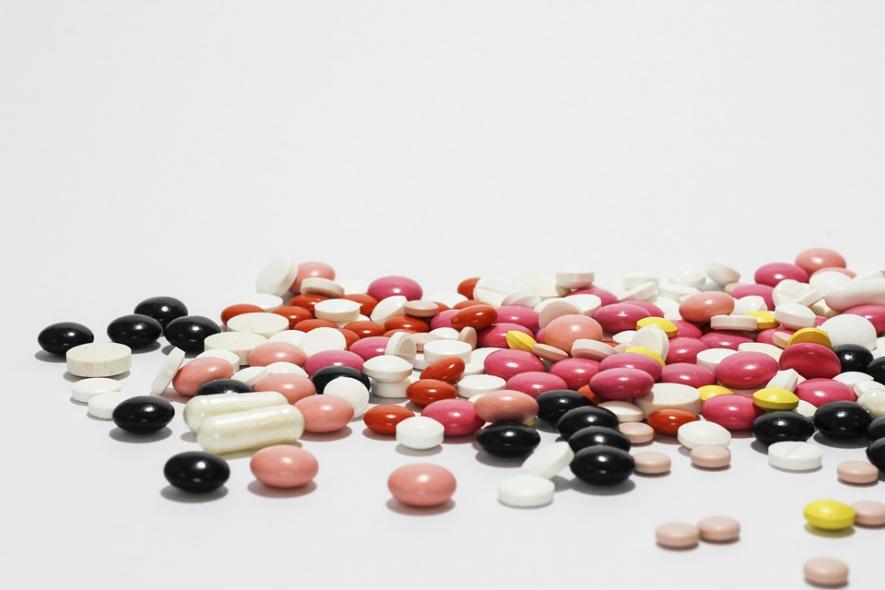Why Hand over a National Asset to Foreign MNCs?

Image Courtesy: pixabay.com
FDI in Pharmaceuticals
In the recent slew of measures aimed at liberalisation of norms for Foreign Direct Investment (FDI), norms for the pharmaceuticals (medicine) sector have been further liberalized. Existing norms allowed for 100% FDI in the case of Greenfield projects (projects that involve infusion of FDI to set up a completely new facility) through the automatic route – i.e. without prior permission from the government. In the case of ‘brownfield’ projects, involving FDI flows directed at foreign takeover of existing domestic companies, 100% FDI was earlier allowed, but with approval from the government. The new norms allow up to 74% FDI flow in the case of takeovers of existing Indian companies (brownfield projects) through the automatic route, without prior permission from the government. Foreign investors will need to seek permission only if their investment exceeds 74% of a company’s market value. The earlier norm of allowing 100% FDI in ‘greenfield’ projects has been retained. This constitutes a major shift in public policy towards the pharmaceutical sector, which is likely to have major medium and long term consequences.
How the ‘Pharmacy of the South’ was built
The Indian pharmaceutical industry is a national asset built through supportive public policy in a bygone era. It continues to be widely hailed as a developing world ‘success story’ given that it is the third largest in the world (by volume of medicines manufactured). It is the largest global supplier of affordable generic medicines, i.e. medicines that are not protected by patents and can be freely manufactured and sold in India and exported to other countries.
Domestic policy in India was responsible for promoting the development of a self reliant pharmaceutical industry – the largest among Low and Middle income Countries (LMICs). Various factor contributed to this, including the Indian Patents Act of 1970, initiation of basic manufacture of drugs in the public sector in the 1950s and 60s and the Drug Policy of 1978 which imposed several restrictions on the operations of foreign companies and provided preferential treatment to Indian companies. The research capacity of public sector institutions was harnessed to develop new processes for manufacture of medicines that were not already patented. As a consequence, though the patent term for medicines was 20 years, in India new drugs were introduced within 2-5 years of their introduction in the global market.
Not only were new drugs introduced in India much before the expiry of patents on these drugs, they were also significantly cheaper.
The post 1970 growth of a generic industry in India had far reaching effects, not just in India, but across the world. At the turn of the millennium the HIV/AIDS epidemic was at its peak. In the year 2000 HIV/AIDS was not a death sentence anymore and a combination of anti-retroviral drugs allowed patients to lead a normal life. These drugs, however, were beyond the reach of patients in most developing countries as they were protected by patents and cost about USD 10,000-15,000 for a year’s treatment. The Indian generic company Cipla, changed the entire landscape of HIV/AIDS treatment in 2001 when it offered the same combination of anti-retrovirals at USD 350 for a year’s treatment. Soon many other Indian generics were to enter the market and push the cost of treatment even lower. The entry of Indian generic anti-retrovirals changed the face of HIV/AIDS treatment and saved millions of lives.
By the early 2000s India came to be termed the “Pharmacy of the South” and Indian generics were supplying affordable medicines to over a hundred countries in Africa, Latin America and Asia. Even today 92% of patients on anti-retrovirals in LMICs use generic drugs, mostly from India. About 50% of the essential medicines that UNICEF distributes in developing countries come from India and 75-80% of all medicines distributed by the International Dispensary Association (IDA) are manufactured in India.
Indian generic companies abandoned by public policy
However, with the onset of neoliberal reforms in India in the 1990s public policy support to domestic industry was reversed. The two principal public sector companies – Hindustan Antibiotics Limited (HAL) and Indian Drugs and Pharmaceuticals Limited (IDPL) -- were systematically undermined through inept management and withdrawal of preferential treatment. The 1978 drug policy’s major thrusts were diluted and reversed in successive policies in 1986, 1994 and 2002, thus nullifying the entire range of protection that was provided to Indian companies, vis-à-vis multinational companies, in the 1978 policy. The 1970 Patent Act was amended in 2005, because of India’s annexation to the World Trade Organisation (WTO) in 1995 which compelled it to sign the Agreement on Trade Related Intellectual Property Rights (TRIPS). As a result, Indian companies do not have the automatic right, any longer, to produce medicines whose patents are held by foreign multinationals. Simultaneously public sector research institutions were starved of government funds, and are not able to support, as earlier, the domestic pharmaceutical industry with innovative technologies.
The generic industry in India has seen another significant shift in the past two decades. From a modest beginning in the export market, today a major share of the manufactured output of the Indian pharmaceutical sector is exported. The growth of India’s generic industry is led by export growth while domestic consumption has stagnated. In the 14 years between 1995-96 and 2008-09, there has been a negative growth of domestic consumption in three years and single-digit growth in 4 years. This export-led growth has consequences regarding the options that Indian companies, especially large and medium sized companies, are inclined to pursue. The stagnation of the domestic market is a result of the burden of out-of-pocket costs that domestic consumers face in accessing medicines. With ever diminishing investment in public health Indian consumers are being costed out of the market, leading to stagnation of domestic demand. There is no long term solution to the stagnation of the domestic market, unless it is located in a significant and sustained expansion of public spending on health care and on procurement of medicines through the public sector.
The extent of dependence on exports of large Indian companies can be gauged from the fact that over 60% of sales of top 25 Indian companies are accounted for by exports. For eight of these, excess of 80% of sales are accounted for by exports. Further, a bulk of these exports is now routed to developed country markets. In 2011, of the top 26 destinations of exports accounting for 66.43% of total pharmaceutical exports from India, 23.45% went to the US and a further 20.15% went to other developed country markets. The increasing dependence on exports, and especially exports to Europe and North America, puts Indian companies in a position where they need to align their policies with interests of countries of the North.
Denied support by public policy the Indian generic companies would now rather collaborate than challenge US and European Drug MNCs. Domestic companies are increasingly looking for tie-ups where domestic facilities are used for outsourcing of both R&D, manufacture and marketing. Business decisions and policies of major Indian generic companies are being informed by their necessity to collaborate with MNCs. This is a major shift from 15 years back, with Indian companies such as Cipla were willing to stand in opposition to MNCs.
Flawed logic of FDI Liberalisation
Liberalisation of FDI norms introduces further challenges to the existence of the Indian generic industry as a self reliant industry. ‘Strategic’ tie-ups between Indian companies and MNCs have been accompanied by acquisitions of Indian companies by MNCs. Such acquisitions were facilitated by the liberalization of Foreign Direct Investment (FDI) norms for the pharmaceutical sector in 2001. The Industrial Policy Statement of 1991, at the beginning of the phase of industrial liberalisation, claimed that “Foreign investment would bring attendant advantages of techno logy transfer, marketing expertise, introduction of modern managerial techniques and new possibilities for promotion of exports.” However from 2001, the year in which 100% FDI was permitted in the pharmaceutical sector (though still requiring government approval for brownfield FDI), the exports-sales ratio of MNCs has grown only marginally – from 7% to 11% between 2000-01 and 2008-09. Furthermore an overwhelming portion of FDI in pharmaceuticals has gone into brownfield projects – data indicates, for example, that 96% of FDI between April 2012 and 2013 was in brownfield sectors
A few years back the government’s Department of Industrial Promotion and Planning (DIPP) had pointed to the threat posed by the liberalised FDI norms to domestic companies. An internal DIPP note said “This has resulted in takeover of key pharmaceutical companies and those with rare facilities and critical verticals, including Ranbaxy, Piramal, Shantha Biotech, AgilaSpecialities and Dabur”. An inter-ministerial group (IMG) on foreign direct investment (FDI), constituted in 2012 had recommended capping of FDI in the pharmaceutical sector at 49%. However, both the previous government and the present government refused to ratify the IMG’s suggestions.
Faux Patriotism of the Modi Government
Today the growing collaboration between Indian generic companies and big Pharma put to question the continued survival of an independent and self reliant domestic industry that was seen as the lifeline for poor patients in different parts of the world. In this context further liberalisation of FDI is like the proverbial last nail on the coffin of the Indian generics industry. The path is now open for large MNCs to, at will, take over Indian companies or convert them to their junior partners. At stake is not just the survival of the domestic industry but of the supply line for low cost generic medicines that services the needs of poor patients across the world. For US, European and Japanese MNCs, the Indian generic companies are ripe for the picking. They can now acquire Indian generic manufacturers and harness their capacities to further their own business interests. One can be sure that such business interests will not include the continued supply of low cost generics. Nor will it include infusion of innovative technologies. Our earlier discussion has shown there has been virtually no interest shown in developing ‘Greenfield’ projects in spite of the facility of 100% FDI through the automatic route being available for the past 15 years.
By allowing up to 74% FDI through the automatic route in the pharmaceutical sector, the Modi Government has decided to place in jeopardy the healthcare of millions of patients across the world and in India. This is clear neoliberal logic where the interest of capital is paramount and welfare is a dirty word. The Indian generic industry was not in dire straits and its profit margins have been consistently healthy – the profit reported by the Indian pharmaceutical sector in 2015-16 was about equal to the entire health budget of the Union Government for 2016-17. So the question really is, what is sought to be achieved by this latest offering. The choices were clear. The government could have primed domestic demand by investing in public health and could have utilized expertise available in public sector research institutes to infuse innovative technologies and build world class Indian facilities that would continue to address the needs of patients all over the globe. That it chose, instead, to hand over valuable Indian facilities to foreign MNCs speaks volumes for the faux patriotism of the Modi government. ‘Make in India’ has indeed become synonymous with ‘Loot in India’.
Image Courtesy: pixabay.com
Disclaimer: The views expressed here are the author's personal views, and do not necessarily represent the views of Newsclick
Get the latest reports & analysis with people's perspective on Protests, movements & deep analytical videos, discussions of the current affairs in your Telegram app. Subscribe to NewsClick's Telegram channel & get Real-Time updates on stories, as they get published on our website.
























